“7-3 to the Russians”: Exploring Poland’s wartime legacy.

I have written, a few times now, about my love of those places to which you can pin a distinct and vivid moment from the past. It doesn’t have to be a world-changing or momentous event, as long as the place where it happened still, in some way, carries evocative resonances of that moment in time. When this happens, it helps to bring that past alive. Sometimes such a response might be emotionally ambiguous, even sobering, but standing in a spot where such events took place often makes them easier to understand.
I was expecting a few moments like this during a recent trip to Poland. After all it is a country with a rich and troubled evolution, one that has been forged, shaped and tempered by its geographical position, squeezed as it is between the granite blocks of those two arch-history-making machines: Germany and Russia. I wasn’t to be disappointed. We began our trip in the Polish capital, Warsaw.
Today Warsaw positively demands to be viewed as a modern city. You can see that in the spaceship-like National Stadium which commands the shore of the River Vistula, from where it performs an evening light-show that is visible for miles across the city. You see it too in the shimmering sky-scrapers, with futuristic shapes to rival London and New York. They rise from the financial district, at the edge of streets which once housed the ghetto. In truth, however much they try, even these 21st century marvels struggle to divert your senses from that past for long. It is a past that is cemented deep into Warsaw’s streets and buildings.
It is made visible too in the colossal fortifications which rise up along the shore of the Vistula. They tell of battles fought long before the 20th century’s great conflicts. I remark to our taxi driver that Poland seems to have spent a lot of time at war with its neighbours.
“Yes, the score is currently 7-3 to the Russians I think,” he chuckles.
Other streets echo with the music of Chopin, in the place where he spent his formative years. Elsewhere, the architectural power-statement that is the Palace of Culture and Science is a brazen relic of the years that Warsaw spent under the Soviet yoke. Originally dedicated to Joseph Stalin, it is still (for now) Poland’s tallest building and it seems to photo-bomb every view we see beyond the old town.
But it is the reminders of just one period of the city’s history – the years 1939 to 1945 – which dominate here, and for good reason. Whilst other cities have built over their past, Warsaw spent decades after the war reconstructing it, piece by fractured piece. The old market square, the castle and many of the palaces which line the streets of the beautiful old town, were re-assembled from the pieces of rubble that remained. The scale of the devastation wrought in those years is made clear by a 3D simulation that you can view in the Uprising Museum. Think of the scenes of decimation we see on the streets of Syria – broadcast on our TV news channels today; then imagine something worse. Whole areas of this historic city were razed to dust.
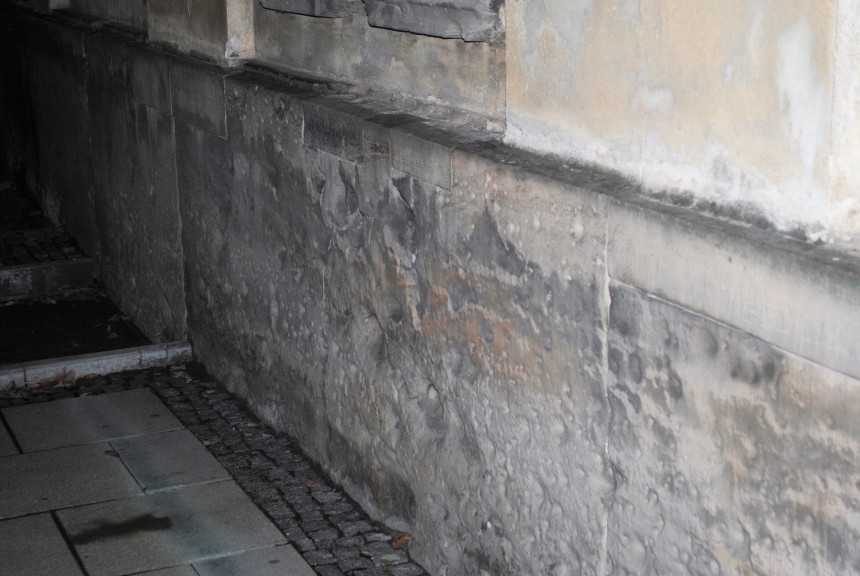
Bullet scarred walls at the Pałac Raczyńskich.
Even despite the rebuilding, some of the physical wounds of conflict remained – like the pockmarked walls of the Pałac Raczyńskich, where 50 men were shot in a street execution in January 1944. The building was later used as a hospital during the uprising. After the battle the Germans murdered the 430 remaining patients, afterwards dousing their bodies with petrol and burning them. There are both scars and ghosts in this place.

The Old Town at night.
The Uprising Museum seems like a good place to start our first full day exploring wartime Warsaw. It is a sprawling, rambling space – spread over three floors of an old industrial building. It tells the story of the uprising of the summer of 1944 largely through the words of those who took part in it, on all sides, and it is chock full of static displays, film and video. We allotted a couple of hours, but it was so jam-packed with exhibits that I’m not sure that a couple of days would have done it justice. It was congested with visitors too (entry was free on the day we visited) and the enormous volume of detail on show was overwhelming. However, the scale of sacrifice that the Varsovians made during those weeks, both to themselves and their city, is made horrifically stark and appallingly clear. When you leave the exhibition and your eyes have adjusted to the shock of the daylight, you encounter a long granite wall spanning the whole length of one end of the museum grounds. It is full of the names of 200,000 or so men, women and children who gave their lives in what was almost certainly, in the end, a futile cause. This makes physical the scale of the sacrifice and, as much as anything else, sets the uprising – and those images and testimonies exhibited inside the building – in context.
Modern Poles seem to have mixed feelings about the sacrifice their forbears made. Their pride is evident in the many memorials – ranging in size from poignantly tiny to gloriously huge – dotted throughout the city. They have even commemorated a sewer manhole cover in recognition of the part the underground tunnels played in the rebellion. And yet they also recognise the folly of an enterprise that was doomed to failure from the start without Allied support. As the bloody drama unfolded, the Red Army watched from the far bank of the Vistula, grinning with satisfaction, as their current and future foes decimated each other.
After leaving the Uprising Museum, our party of four went in search of that other comprehension-defying human tragedy that played out on the streets of this great city during that war: the ghetto.
A short walk from the museum we turn into Chłodla, the street which divided the ghetto and over which a bridge was built to allow the Aryan inhabitants of the City to go about their business without contact with their Jewish neighbours. The bridge is long gone, but the cobbles and tramlines which still survive are immediately redolent of that time, running below the modern buildings which overlook them. The ghetto area itself is identified by memorial plaques and by a marker set into the pavement which traces the line of the boundary wall.
Within this boundary, and thanks to one of many helpful locals (and his dog), we find the Nożyk Synagogue, the only survivor of the 400 pre-war Jewish places of worship left in Warsaw. The man also directs us to where we can find a section of the original ghetto wall. It has been left standing as a memorial to the people who perished there.
Everywhere in Warsaw the various stages of its history intermingle. To get to the ghetto wall we must buzz one of the inhabitants of a modern apartment block. It’s a case of closing your eyes and choosing one of the buttons on the intercom. We choose number 14. After a moment of suspense as we wonder if the person answering had understood our English, they click the front door open without complaint and we funnel through to the back yard where the wall stands. It is overlooked by modern high-rises and the ubiquitous Palace of Culture and Science. A Jewish man wearing a Kippah skullcap joins us and says a prayer. We step back to give him space, knowing that his remembrance is likely to be personal.
I find it difficult to categorise what our visit symbolises. Remembrance? Yes… to a degree, but not to the extent of the Jewish man standing before us. Commemoration? Perhaps… but the commemoration of what exactly? Wanting to understand the unimaginable… wanting to know? Certainly. I have wrestled with these feelings before, on a visit to Auschwitz a couple of years ago. As we leave, we discover that we can access the other side of the wall too, through a yard belonging to the business next door. This time we don’t have to go through the flats to do this.
As we move deeper into the streets of the ghetto we arrive at the site of the old Gestapo headquarters – the Pawliak Prison. This place chilled the hearts of Varsovians. Executions were daily occurrences here. The skeleton of an old tree in the courtyard is preserved as a ghostly reminder of what happened in this spot. Its trunk is thickly overlaid with plaques marking the names of those who perished here. Behind it memorial headstones line the boundary wall. As dusk begins to descend it is a grim place to be, even today.
By now it’s too late for us to tour the prison museum and, as the light ebbs away, we decide instead to walk the path of remembrance which loops around the heart of the old ghetto. From here over 300,000 of the 350,000 pre-war population of Warsaw Jews, the largest in Europe, were transported to Treblinka and other death camps. Sobering though the story is, as you cross the wide empty streets that are today lined with bland and unremarkable modern buildings, it’s hard to link this place directly with those grisly events.
The most moving place is the Miła 18 memorial. It marks the site of the bunker where the final few desperate survivors of the ghetto resistance made their futile last stand. Fifty-one of them died here and they lay here still, their names inscribed on a memorial stone. You feel it in this place… the sadness, the death, the futility. It feels haunted. Maybe that is because it is enclosed in its own space, away from the street? Maybe it is because of the eerie backdrop of a darkening purple-red sky? Maybe it is because it is a grave?
The remembrance walk ends at the brand new POLIN museum, which tells the story of the Jews in Poland and at another of the huge monuments that the Poles do so well.
On the second full day of our trip we leave Warsaw behind and are driven north along endless, straight, Russian-built roads. We cut through the industrial edge of the city and its remote suburbs, over the wide Vistula and into countryside which, surprisingly, resembles a British rural landscape at times. We pass pillboxes hidden in the woods and village memorials (one of them is an old tank) and arrive in East Prussia and the glinting Polish Lake District. The houses here are more rustic, some built of wood, others with thatched roofs. The names of the villages, too, betray their troubled history. Some of them are Polish, others are German, some have both Polish and German names. A few have Lithuanian names. We are two hours from the Lithuanian border and an hour from the Russian enclave of Kaliningrad Oblast. In amongst all of this we drive past a Tesco superstore.
Four hours into our journey we arrive at our destination, the town of Kętrzyn. It used to be known under the German name of Rastenburg and, according to our driver, some still choose to call it that. It hides a secret in the woods – the Wolf’s Lair.
The Wolf’s Lair is sometimes referred to as Hitler’s bunker in East Prussia. It’s actually a collection of around thirty ‘bunkers’ and other buildings which formed his eastern HQ. It lurks amongst the Görlitz forest, empty and silent apart from the rustling trees, populated only with a few tourists and the odd hooded crow or scuttling squirrel, but it teems with ghosts. Hitler spent around 800 days here during the war, more than he spent at any other single place. It was here that he oversaw his ultimately disastrous Russian campaign; it was here that the most famous attempt on his life was made.
The bomb planted by Colonel Claus von Stauffenberg was detonated, not in one of the large bunkers, but in a barracks buildings used for conferences. It lies close to the entrance to the complex. Today its ruined remains contain only a memorial to Stauffenberg and the 5,000 suspected conspirators who were executed in the wake of the failed plot. Standing here, even though you are familiar with the story, the hackles rise on your back with the thought of what might have been. Those questions resurface. What if the conference had been held in one of the large bunkers instead – where the thick double-layer of would have magnified the blast? What if Stauffenberg had put his case down in another place? What if it hadn’t been moved? What if he’d deployed his second bomb? What if it had succeeded? Would it have made a difference anyway?

Stauffenberg Memorial at the place were the assassination attempt took place.
The whole site now contains only ruined remains. The retreating Germans blew it up in January 1945, a few days before the Russian Army rolled into the forest. Our enthusiastic guide takes us to each building. The larger bunkers have a two to four-metre thick concrete inner shell and a four to five metre outer shell. Inside Hermann Göring’s bunker or Stauffenberg co-conspirator General Erich Fellgiebel’s teleprinter exchange, the structures are, more or less, intact. We are taken through dark, narrow, tunnels into the damp and dripping blackness within. They are oppressive spaces, booby-trapped now with rusty iron rods which protrude from the shattered concrete. It’s almost impossible to believe that some form of daily life existed here, that ordinary people did ordinary things.
Hitler’s bunker, by contrast, has been literally blown apart, one wall stands upright, but the others and the roof too, lie on their side – making it even more difficult to imagine or sense the history that was made here; and yet the past does haunt this place.

Hitler’s bunker.
It also haunts the garages and the mess halls and kitchen, the smashed tea room so loved by Hitler, and the ‘house’ that Göring used adjacent to his bunker. It’s easier to imagine ‘Lilli Marlene’ or ‘The Horst Wessel Song’ echoing around these spaces, as it is to conjure up the sounds of the throbbing engines of swastika decorated armoured vehicles in the garages. There is a poignancy too in the threads of telegraph wires left rusting in the tree-tops, garrotting their hosts, causing the bark to grow like bulbous tumours around them. How many thousands of messages – maybe even orders direct from the Führer, that impacted millions of lives… that caused the deaths hundreds of thousands of people, pulsed through these same wires, I wonder?
That feeling of unease comes over me again. Is it right to be a tourist in a place like this? I mean, there will be visitors who come here with less benign intentions than me. The sort of people who might see this as a shrine perhaps? But then I realise that this is a castle… isn’t it? Not some crumbling medieval fortress for sure, but no different in the grand scheme of things. It is part citadel, part palace and was ruled by a mad King. Bad things happened here and evil people walked on its pathways and through its tunnels; but so did men and women with better intentions and with ideals that I hope I might have shared, if I were in their shoes. If so, then there is no difference between it and any other place where history was made, other than, perhaps, the depth of the darkness that shrouded it. Now only the shadows of that darkness remain.
We can and should learn from these places. Learn, that is, of the nuanced shades of light and darkness surrounding even the worst regimes in history; of the good that can still penetrate the darkest places; of how history can be altered in any number of ways in just one split second; of how that altered history can be wrought by sheer luck or chance and of how, in the end, everything becomes shattered and overgrown.
With the sun lowering in the sky, we set off on the road for our four-hour return journey back to Warsaw. As we do so, we pass by a twisted metal post which is almost hidden by the grass at the roadside. Our driver points it out and explains that it was the post upon which once rested the security barrier, next to the guard house, at the entrance to the complex. I wonder whether this was the same barrier that Stauffenberg negotiated his way through on 20 July 1944, as the impact of his explosion was still reverberating through the camp. It makes me think about the courage it must have taken to do what he did. Our exit is quieter. Whereas Stauffenberg might have been nervously pondering his fate as he headed for his plane back to Berlin, we simply head off to the Tesco store in search of a sandwich.

The uprising memorial in Warsaw.
Additional Sources:
The Holocaust Research Project at http://www.holocaustresearchproject.org
The Jewish Virtual Library at http://www.jewishvirtuallibrary.org
The Jewish Historical Institute at http://www.jhi.pl/en/institute
The Warsaw Uprising of 1944: The History of the Polish Resistance’s Failed Attempt to Liberate Poland’s Capital from Nazi Germany – by Charles River Editors
Wolfsschanze Tourist Guide by Czeslaw Puciato (1997)















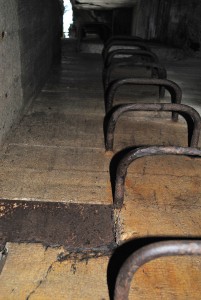





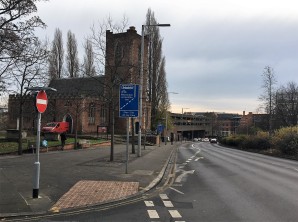



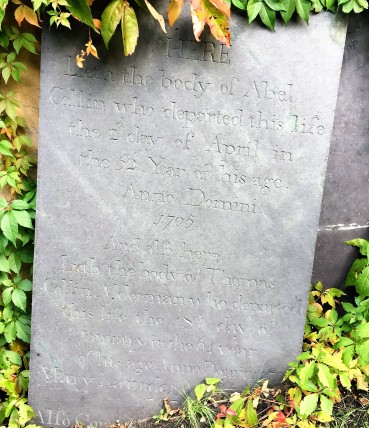

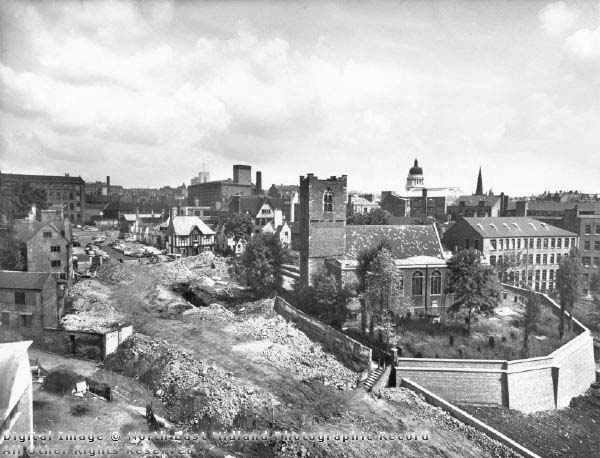
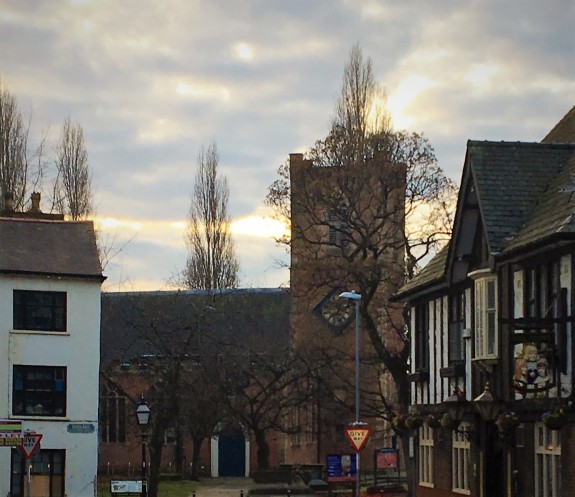

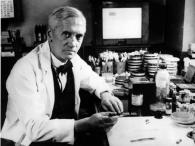 Alexander Fleming’s accidental encounter with Penicillin… or even the thin dividing line that exists between a failed and a successful world-changing assassination attempt (Napoleon, Hitler or any number of American Presidents and Russian Tsars all had close shaves … whilst others weren’t so lucky). However, in my view, it is the process of evolution through natural selection, illuminated with such clarity by the likes of Darwin and Wallace, that best demonstrates the beneficent catalytic effect that chance plays in our past.
Alexander Fleming’s accidental encounter with Penicillin… or even the thin dividing line that exists between a failed and a successful world-changing assassination attempt (Napoleon, Hitler or any number of American Presidents and Russian Tsars all had close shaves … whilst others weren’t so lucky). However, in my view, it is the process of evolution through natural selection, illuminated with such clarity by the likes of Darwin and Wallace, that best demonstrates the beneficent catalytic effect that chance plays in our past. Just think about it for a second or two… each of those relationships needed a single moment when two people met each other for the very first time. It might have been a physical encounter, accidental or otherwise, or maybe just eye contact across the proverbial crowded room. Perhaps that single moment happened in an explosive coming together or maybe it simply initiated a chain of outwardly unremarkable events that ultimately forged one of those crucial links in our family tree. In my novel, Jack and Freda’s first meeting takes place in the benign surroundings of a green meadow and they, presumably like our ancestors, have no inkling of the life-changing consequences that will flow from it.
Just think about it for a second or two… each of those relationships needed a single moment when two people met each other for the very first time. It might have been a physical encounter, accidental or otherwise, or maybe just eye contact across the proverbial crowded room. Perhaps that single moment happened in an explosive coming together or maybe it simply initiated a chain of outwardly unremarkable events that ultimately forged one of those crucial links in our family tree. In my novel, Jack and Freda’s first meeting takes place in the benign surroundings of a green meadow and they, presumably like our ancestors, have no inkling of the life-changing consequences that will flow from it. ily history for about 30 years. To date I can trace some of my family lines back through 15 generations. Even with my horribly shaky maths I can work out that 15 generations means 65,534 individual people, all of whom must have met a partner along the way. That’s 32,737 separate meetings that had to take place to produce me… and, of course, that does not even come anywhere near scratching the surface.
ily history for about 30 years. To date I can trace some of my family lines back through 15 generations. Even with my horribly shaky maths I can work out that 15 generations means 65,534 individual people, all of whom must have met a partner along the way. That’s 32,737 separate meetings that had to take place to produce me… and, of course, that does not even come anywhere near scratching the surface.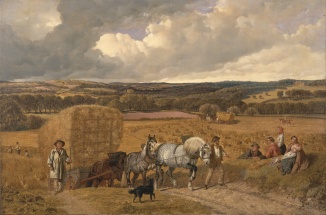 In 1841 my Great Great Great Grandfather Charles Harriman was labouring on a farm in Sutton Bonington, Leicestershire. Another worker on the farm happened to be a chap called Thomas Gascoigne. Thomas had a sister called Elizabeth. At some point Thomas must have introduced Elizabeth to Charles, because the two of them were married the following year. So what if Charles had gone to work on another farm or he didn’t get on well enough with Thomas to be introduced to his sister?…
In 1841 my Great Great Great Grandfather Charles Harriman was labouring on a farm in Sutton Bonington, Leicestershire. Another worker on the farm happened to be a chap called Thomas Gascoigne. Thomas had a sister called Elizabeth. At some point Thomas must have introduced Elizabeth to Charles, because the two of them were married the following year. So what if Charles had gone to work on another farm or he didn’t get on well enough with Thomas to be introduced to his sister?…

